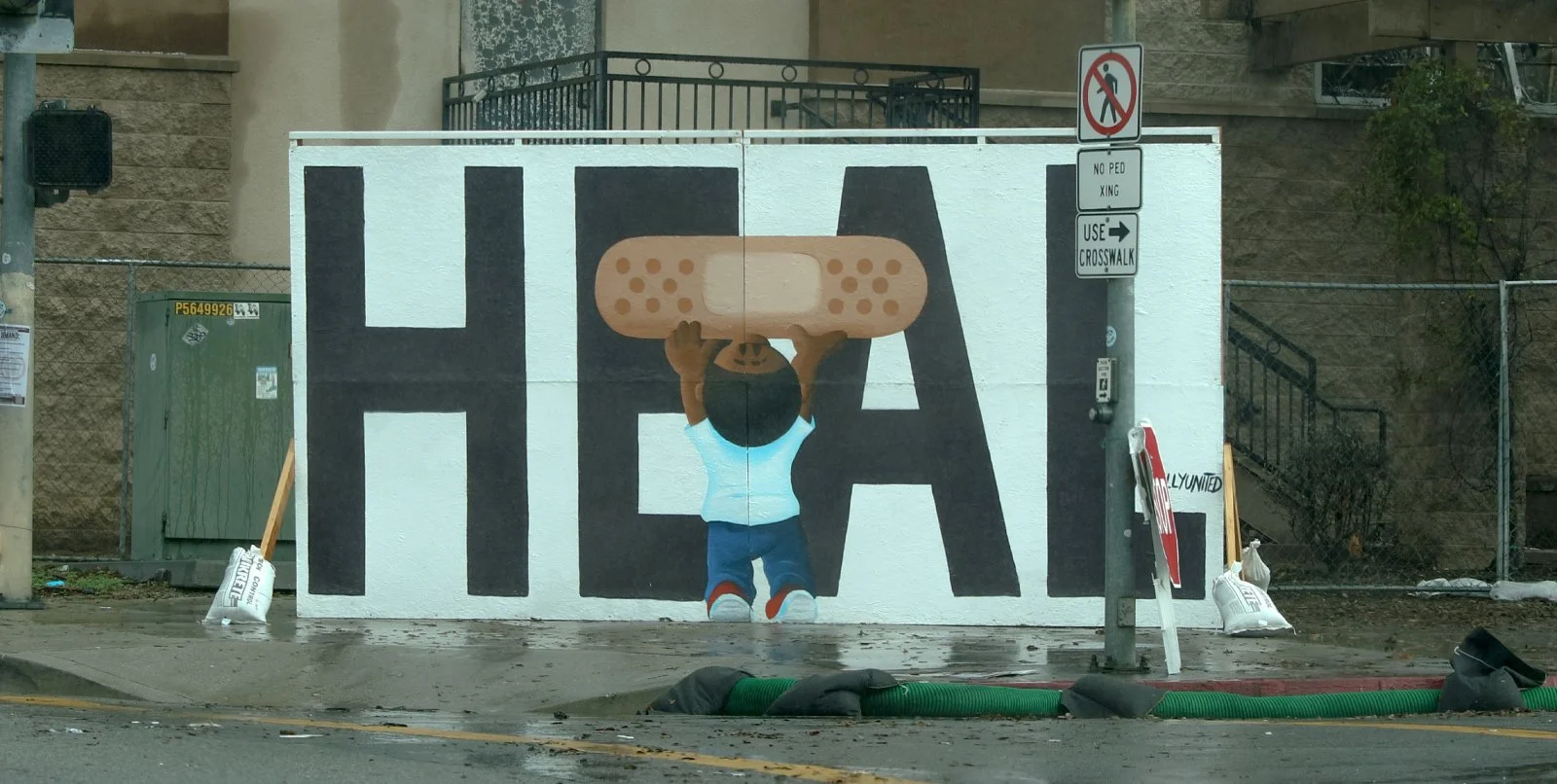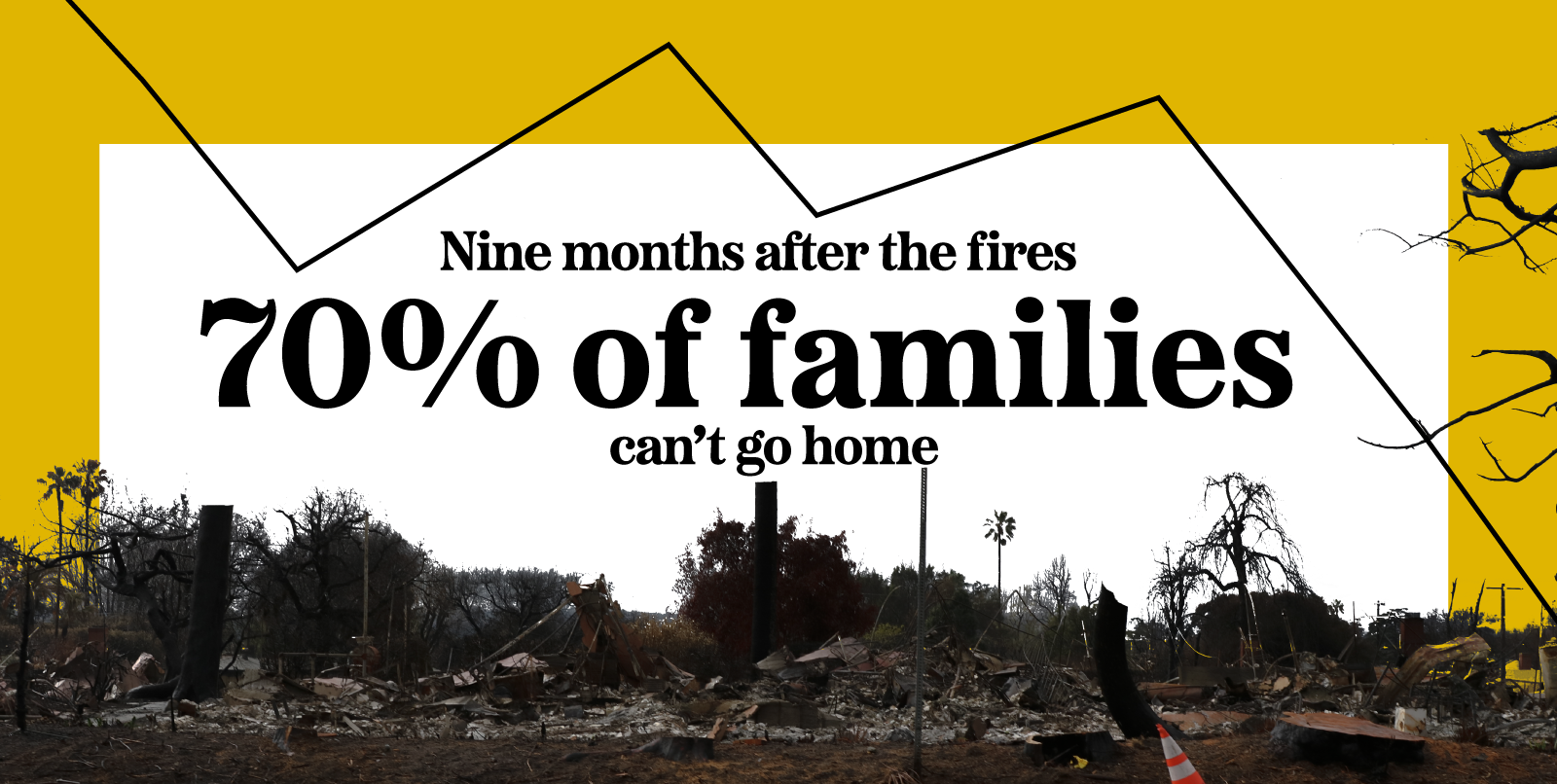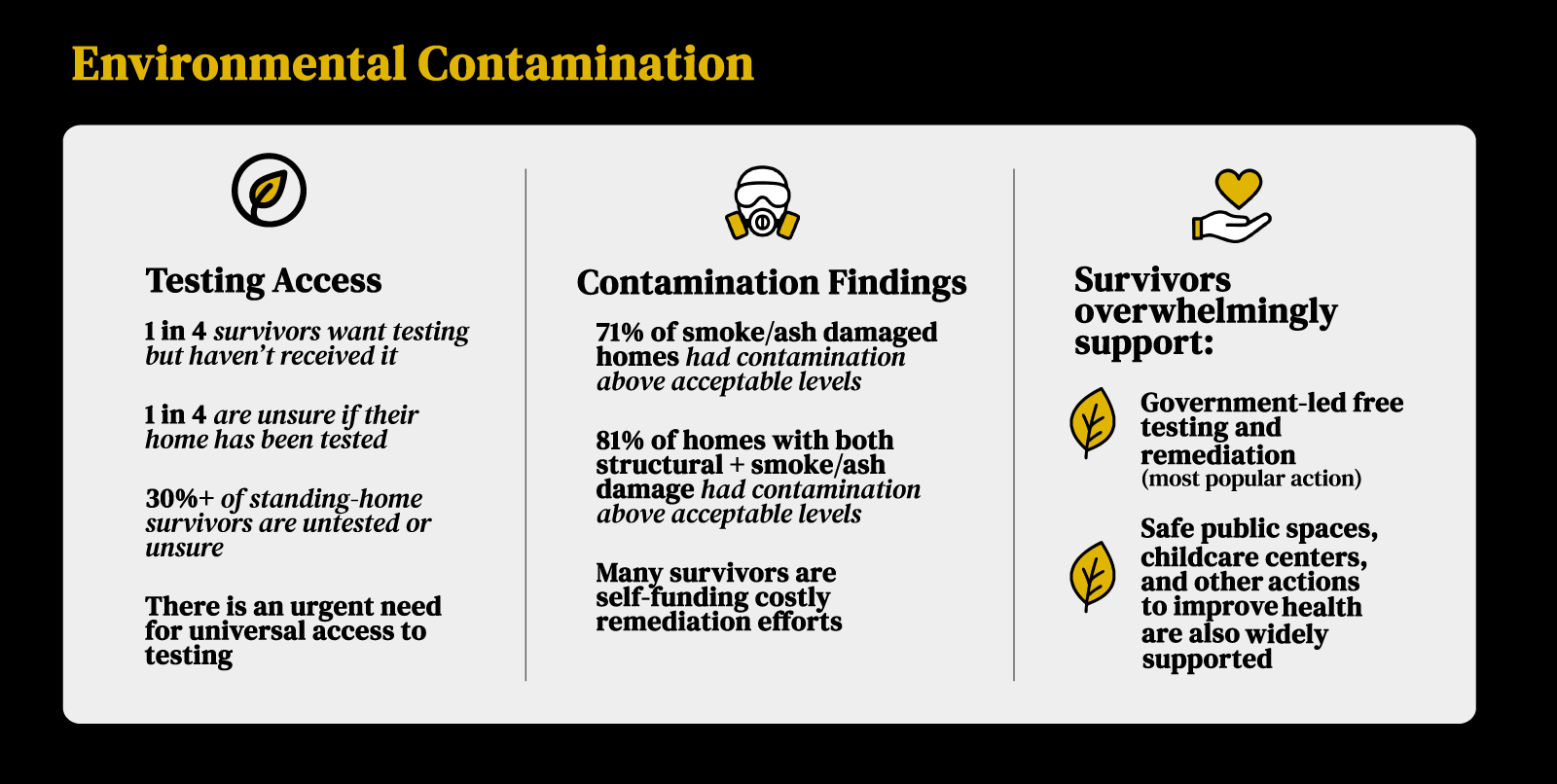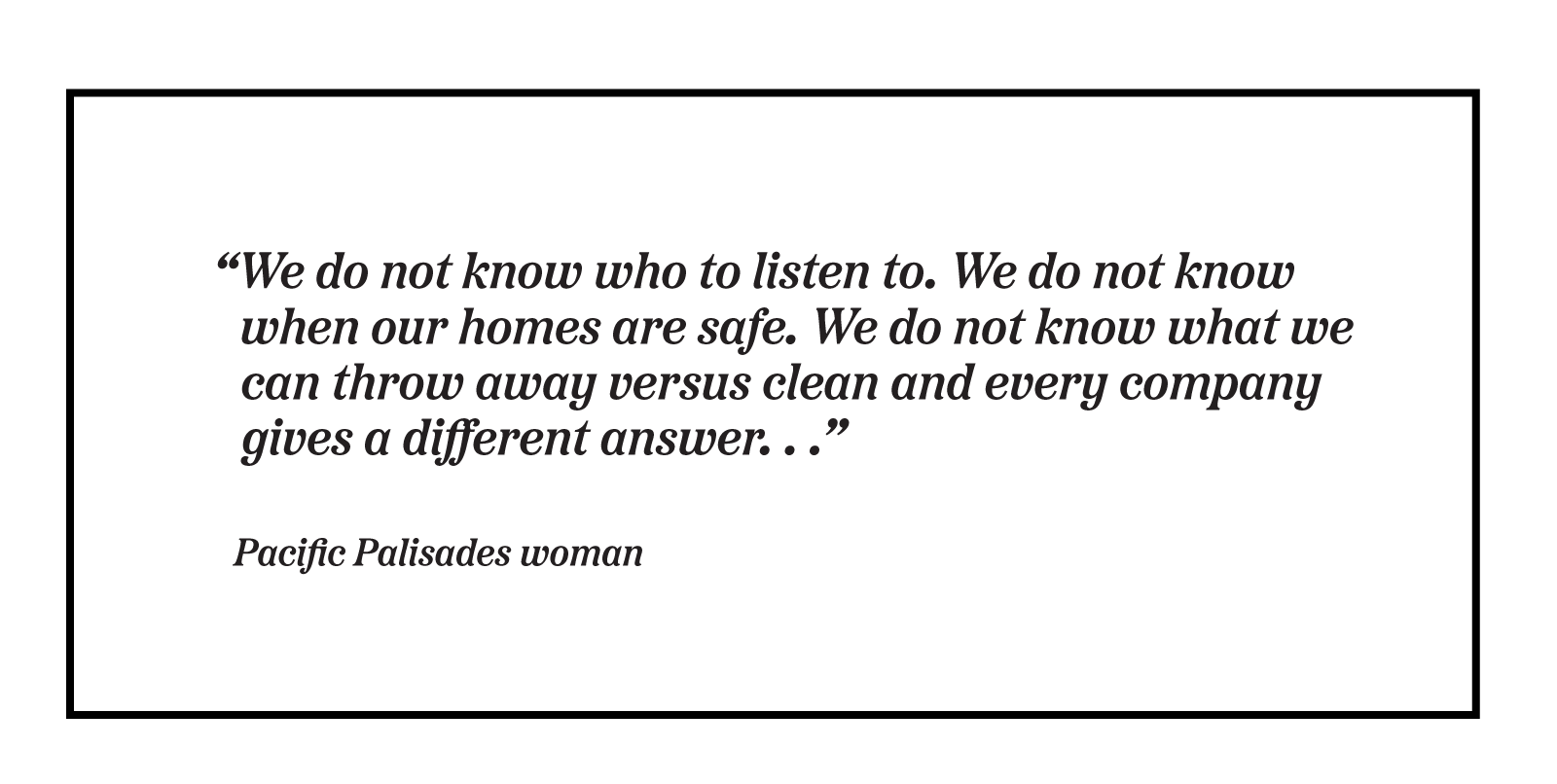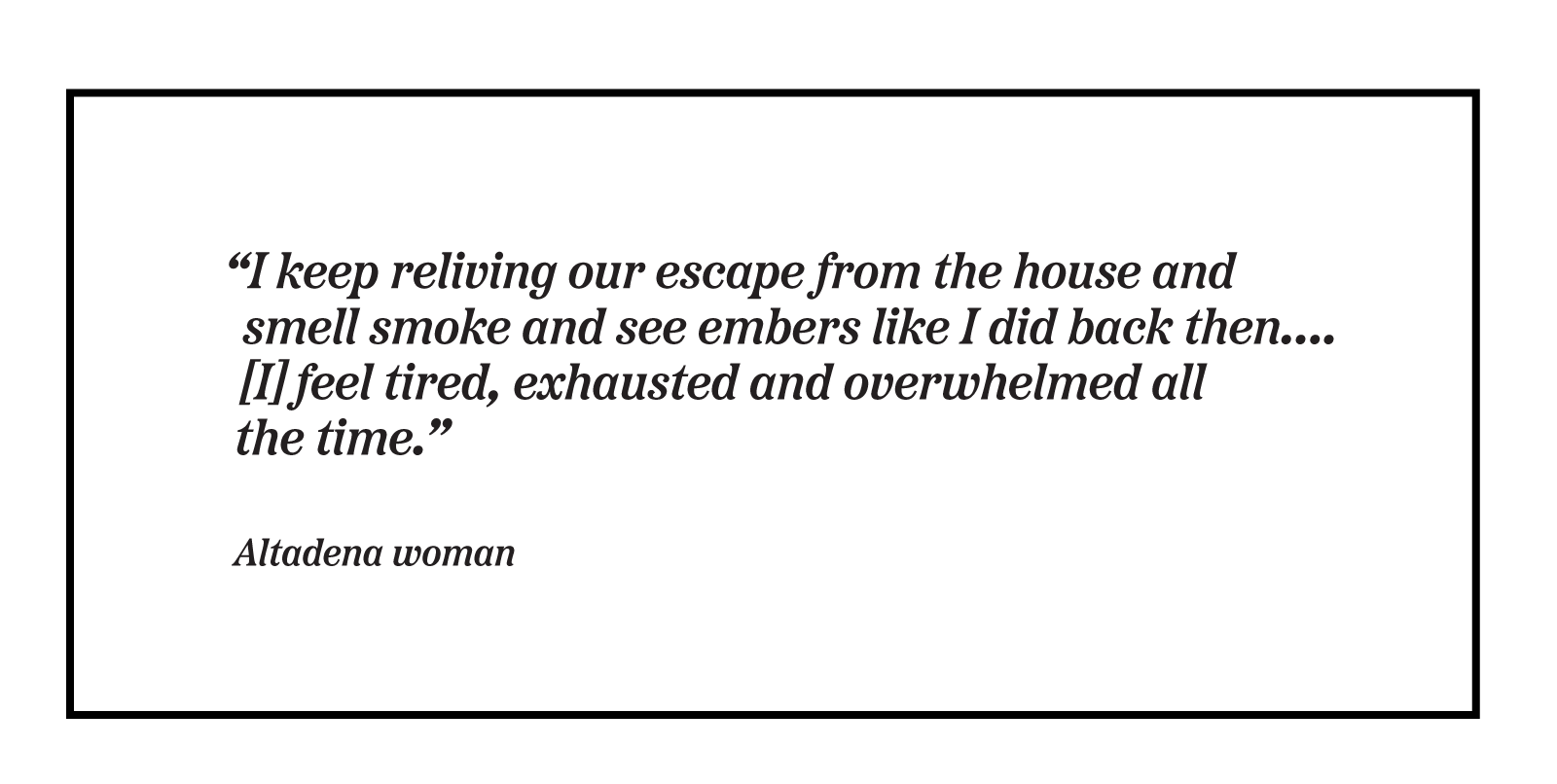“This Is Bigger. This Is Systemic.” What 2,335 Fire Survivors Told Us Nine Months After the Fires
Nine months ago, the Eaton and Palisades Fires tore through Los Angeles communities, destroying thousands of homes and displacing over 100,000 residents. In those early days, neighbors sheltered neighbors, relief funds flowed in, and survivors hoped for a swift recovery.
Between September 8 and 17, we surveyed 2,335 fire-impacted residents across Altadena, Pacific Palisades, Malibu, and Pasadena for the Department of Angels’ third Community Voices: LA Fire Recovery Report. The findings reveal a clear pattern: survivors face interconnected challenges including displacement, financial strain, insurance barriers, environmental concerns, and mental health pressures that require coordinated, cross-sector solutions to resolve.
These challenges extend beyond individual families. They have implications for community stability, regional economic health, and the long-term resilience of Los Angeles.
Mass Displacement Persists Nine Months Later
Seventy percent of families are still displaced, a figure nearly unchanged since our June survey.
The financial impact is substantial. The median net loss among survivors is $200,000, exceeding most households' annual income. For lower-income families, the strain is acute: 1 in 5 households earning under $100,000 report having to forgo food, and 1 in 6 are delaying necessary medical care.
Already, 10% of survivors earning under $50,000 have experienced homelessness since the fires, an early indicator of the housing stability challenges ahead.
Insurance Experiences Vary Significantly by Provider
For many homeowners, navigating insurance claims has become a significant barrier to recovery. Our data shows notable differences in survivor experiences across insurance providers.
The two largest insurers, State Farm and the California FAIR Plan (serving nearly a third of fire survivors), receive notably lower satisfaction ratings. Their customers report higher rates of claim complications, including denials, communication challenges, and protracted claim timelines, compared to customers of other carriers.
Survivors with standing homes face particular challenges. These are properties that sustained smoke and structural damage without total loss. These households report losing displacement coverage at four times the rate of total loss survivors, while often facing more complex claim adjudication processes.
These access challenges contribute to extended displacement, financial pressure, and delayed rebuilding timelines. In some cases, families return to properties before completing remediation or contamination testing due to coverage constraints.
Environmental Testing Remains a Priority for Survivors
One in four survivors seeking contamination testing for their properties have been unable to access it. Among those who have secured testing, the vast majority with standing homes reported contaminant levels above acceptable levels.
Fire residue can introduce lead, arsenic, and other toxins into soil and structures. Without accessible testing and remediation resources, families face difficult choices about return timelines and living conditions.
As in last quarter, survivors across the board express strong support for government-led free contamination testing and cleanup.
Community Networks Provide Essential Support
Throughout the recovery process, one pattern has remained consistent: survivors turn first to neighbors, local leaders, and survivor-led groups for information, resources, and connection. These hyperlocal networks continue to serve as primary support systems.
Survivors also demonstrate strong commitment to rebuilding to enhance fire resilience. More than 8 in 10 support investments in related upgrades and improvements, including underground power lines and community-level fire hardening.
Mental health remains a significant concern, with nearly three quarters of survivors sharing that their mental health has worsened since the fires. Displacement appears to carry particular psychological weight.
While community connection and individual determination are valuable assets, they require complementary support from coordinated systems – including insurance, government services, and environmental health resources – to translate into sustainable recovery outcomes.
How the Department of Angels Is Responding
This survey and analysis reflect the Department of Angels’ core work to translate direct community feedback into actionable insights that inform policy solutions and strengthen recovery coordination.
We focus on connecting survivors with the resources, tools, and support systems needed to lead their own recovery:
Advancing federal recovery funding and coordinating with local and state partners to ensure effective resource distribution
Supporting insurance accountability efforts to make policyholders whole and convening a Finance & Insurance Solutions Working Group to develop accessible, fair, and climate-ready reforms
Collaborating with leaders in public health, scientific research, and philanthropy to expand access to coordinated, government-backed soil testing and remediation through initiatives like the LA Fire HEALTH Study, CAP.LA, and USC CLEAN
Translating community input into practical rebuilding solutions, including alternative construction approaches and streamlined permitting
Strengthening survivor-led networks including neighborhood response systems, block captain programs, and peer support organizations
What Survivors Need to Move Forward
The work ahead is bigger than any one agency or sector. It’s going to take all players in the recovery ecosystem – moving in the same direction – to get funding flowing, hold systems accountable, and help survivors recover. That includes all of us: neighbors, community members, civic leaders, and residents across Los Angeles who can advocate, support local recovery efforts, and ensure survivors aren't forgotten as the months pass.
Survivors need federal disaster recovery funds to reach them quickly and effectively. Without this support, families are taking on unsustainable debt while waiting for resources that may determine whether they can rebuild at all.
Survivors need their insurance companies to honor the coverage they paid for with timely claims processing and full payouts for rebuilding, repair, and remediation. The significant variation in experiences across carriers shows this is achievable when systems prioritize policyholders.
Survivors need extended rental assistance and mortgage relief that reflects the multi-year timeline recovery actually requires. With 61% of insured survivors facing a coverage cliff within the year, families are making impossible calculations about whether they can afford to stay.
Survivors need access to environmental testing and remediation without prohibitive costs. Families shouldn't have to choose between living in potentially contaminated homes and exhausting their remaining resources on testing and cleanup.
These needs emerged directly from what 2,335 survivors told us about their lived experiences nine months into recovery. The Department of Angels remains committed to ensuring these voices continue to drive solutions and support systems to meet their needs.
About This Research
The Department of Angels’ third Community Voices: LA Fire Recovery Report is based on a survey conducted September 8-17, 2025 of 2,335 adults who were living in fire-impacted communities in January 2025.
The Department of Angels is an independent nonprofit formed in the immediate aftermath of the January 2025 Los Angeles fires. We connect community-based organizations, government officials, civic leaders, and subject-matter experts to ensure fire-impacted communities can lead their own recovery, on their terms, with the support, resources, and information they need to thrive.
The full report and detailed findings are here and here. Reports for previous iterations are here and here.

